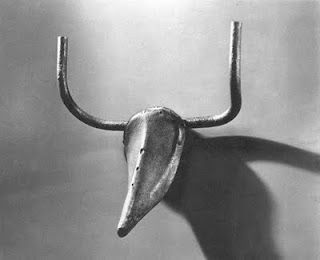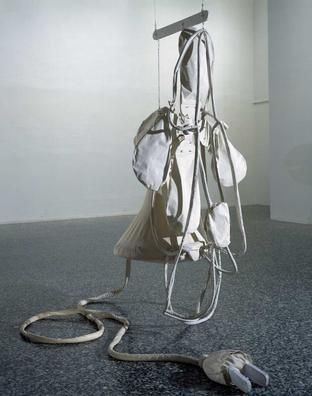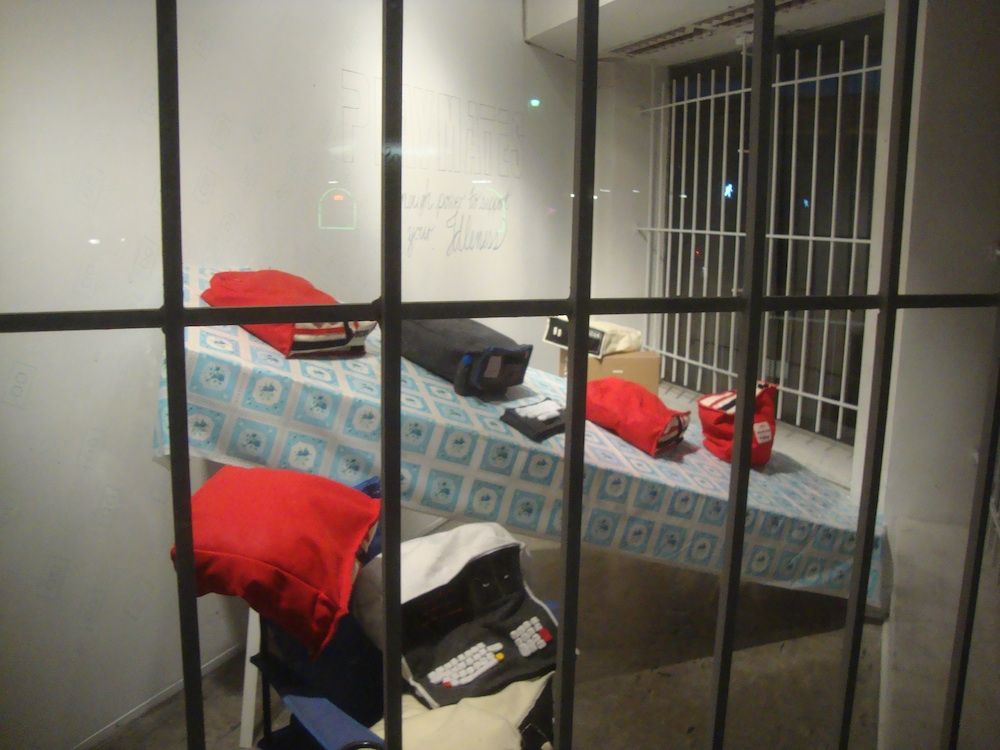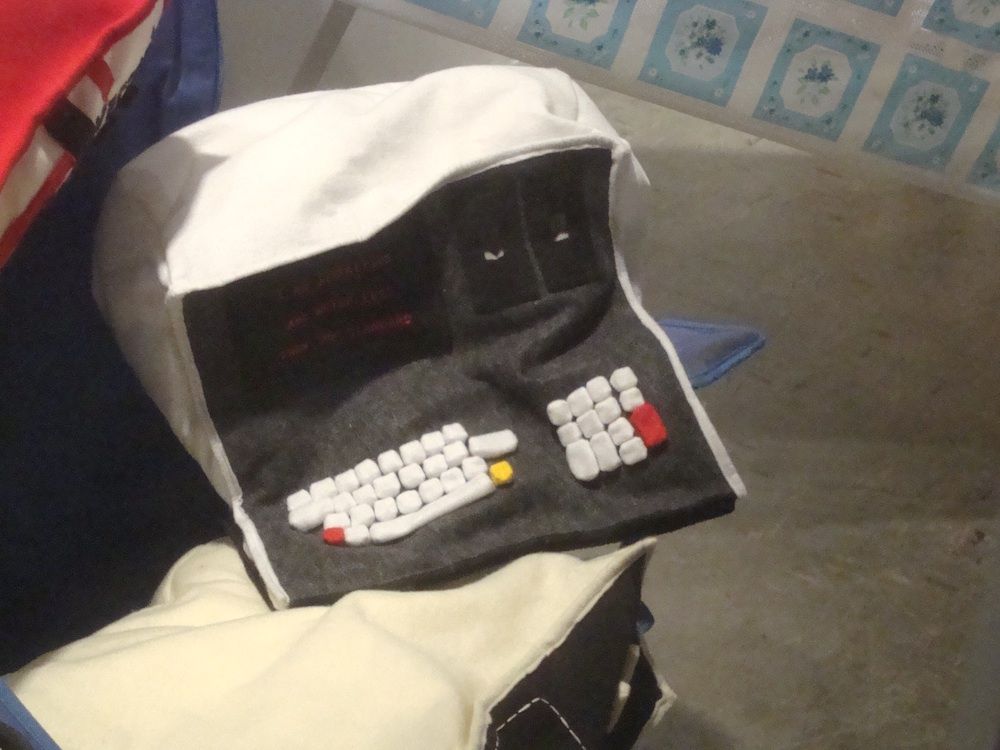
Pablo Picasso, Bull's Head, 1942, bicycle seat and handlebars
When Picasso attached a set of handlebars to a bicycle seat to make a bull's head, he was prefiguring one of the great themes of sculpture for the next 70 years--transformation. This has frequently involved taking a subject and making a sculpture of it that transforms one or more seemingly essential quality of the subject.

Claes Oldenberg, Giant Soft Fan--Ghost Version, 1967, canvas, wood, polyurethane foam
This is what Claes Oldenberg did with his soft sculptures, such as the MFAH's Giant Soft Fan--Ghost Version. He takes an object that is inherently hard, an electric fan, and by rendering out of cloth turns it into something that is mostly soft and droopy. He transforms the fan in other ways, too. He turns a small object--a desktop fan--into a very large object. And he performs the fundamental Pop Art transformation--from anonymous, trivial mass-culture object to unique work of art. Since then, we have seen tiny objects rendered large, large objects made small, common objects remade with precious materials, rugged objects remade as fragile objects, innocuous objects made dangerous, etc.
I was thinking of Claes Oldenberg's sculptures when I saw Ariane Roesch's Playmates, on view at Box 13 through June 23. She has taken early computers and rendered them in felt with stuffing. She has, in effect, turned them into a cross between a throw pillow and a plushie.

Arianne Roesch, Playmates (installation view), 2012
According to the description of the work on the Box 13 web page, Roesch is depicting computers from just at the moment when they were starting to be used in the home, when they ceased to be purely utilitarian and became partly for entertainment. (This is something of an error. Even back in the days when you had to dial up from a teletype terminal to a centralized mainframe, there were games. I remember in 7th grade wasting many hours playing a game then called "Advent," which later was marketed under the name Zork. If you know the phrase,"You are in a maze of twisty little passages, all alike," you have probably played a version of this game.)

Arianne Roesch, Playmates (detail), 2012
The main thing here is that the computers have been transformed. They are no longer useful, but they are huggable. As much as we love our computers, as much as design-savvy computer makers have tried to turn them into attractive objects, computers still feel hard and technological to many of us. They don't feel cute and cuddly, like the Playmates do. (In Japan, robots in popular culture have long been considered "cute," but I don't think our relationship with technology is quite the same in the U.S., despite movies like Wall-E.) So Roesch's sculptural transformation is therefore quite extreme.

Arianne Roesch, Playmates (detail), 2012
When you see these soft droopy sculptures of computers, you want to hug them. And no matter how much you love your actual computer, I bet you have never considered hugging it.

No comments:
Post a Comment